This article needs additional citations for verification .(November 2007) |

Clan Turnbull is an armigerous Scottish clan.
This article needs additional citations for verification .(November 2007) |

Clan Turnbull is an armigerous Scottish clan.
A legendary account of the Turnbull name was told by Hector Boece, in his History of Scotland. Boece tells the legend that during the Wars of Scottish Independence William of Rule saved King Robert Bruce by wrestling to the ground a bull that had charged at the King. For this feat, the King rewarded William with the lands of Philiphaugh, now part of Selkirk, and dubbed him "Turnebull" (the "e" was later dropped).
The story of the young man who saved the life of Robert the Bruce, called Will-o-Rull is well known; also how Robert the Bruce changed his name to Turn-E-Bull. This later evolved to the name "Turnbull".
The name of Rule is of quite ancient origin in the border counties of Scotland and in the north of England. It first appears in the fourth century when St. Regulus or St. Rule arrived on the shores of Scotland at what is now St. Andrews in Fife.
Another possibility that the family may have descended from Richard De Rollo, also known as Richard De Rule, claimed to have come to the British Isles about the time of William the Conqueror and descended from Rollo of Norway, Duke of Normandy (860–932).
He was given extensive grants of lands and property in Scotland and England. Still, the first authentic records of the name appear about 1128 when persons named Adam Roule, Richard Roule, Hugo Roule, William Roule and John Roule are noted in the Scottish Borders in the county of Roxburgh.
There is an area in the south central part of Roxburghshire that is known as the Valley of the Rule. This valley contains a small river called Rule Water, and there are several little communities along its course that bear, in part, the name of Rule, such as Bedrule, Abbotsrule, Hallrule, Town of Rule, and more.
Also from this valley comes the branch of the Rule Family whose name is now Turnbull. As the story is told, about 1315 in Selkirkshire, a giant named William Rule was on a hunting trip with King Robert the Bruce, when the king was attacked by a wild bison or bull. Grabbing it by the horns, Rule turned its head to one side and killed it. He was given the name of "Turn-E-Bull" by King Robert and from him has descended a quite extensive family. This story is referred to in the register of the great seal of Scotland. John Leyden describes the incident as follows: "On Scotia's lord he rushed, with lightning speed, / Bent his strong neck, to toss the startled steed; / His arms robust the hardy hunter flung / Around his bending horns, and upward wrung, / With writhing force his neck retorted round, / And rolled the panting monster on the ground, / Crushed, with enormous strength, his bony skull: / And courtiers hailed the man, who turned the bull." [2]
Another possibility, [3] Is, that Turnbull is derived from the Old English Trumbald [4] or French Tumbald (meaning "strong and bold"), [5] or that Robertus de Turnbulyes, who swore fealty to King Edward I of England in 1296, could be the family father.[ citation needed ]
Despite the dispute over the origin of the Turnbull name, historians[ who? ] agree that:
The Turnbulls were to become one of the most turbulent of the Borders families. [7] A Scottish nobleman, sent to see if the Turnbulls would back their claim to the throne, reported back that they had no care at all for politicians but always yearned for a fight.[ citation needed ]
Before the Battle of Halidon Hill in 1333, a champion on the Scottish side, a huge man named Turnbull, accompanied by a huge black mastiff, [8] approached the English host and challenged anyone to single combat. [9] Sir Robert Benhale, a Norfolk knight, answered the challenge and killed both Turnbull and his dog. [10] Benhale returned to the English host, bearing Turnbull's head as a trophy. [11] [12] [13]
Major Gordon Turnbull led the vicious counterattack on the French Cavalry by the 2nd Scots Greys at Waterloo.[ citation needed ] Though outnumbered some 2-1,[ citation needed ] the Scots broke Napoleon's famed cavalry,[ citation needed ] and the Greys destroyed most of Napoleon's legendary Nogue's brigade, resulting in the capture of the eagle of the 45th Ligne. According to Wellington, they "had little tactical ability or nous"[common sense], "but fought like raging bulls". This was taken as a compliment by their Turnbull leader, whose son, brother and three cousins rode into battle: five were wounded and one died. James Hamilton, overall commander of the Greys and the other Scottish cavalry regiment (who were supposed to form a reserve), ordered a continuation of the charge to the French Grande Batterie. Though the Greys had neither the time nor means to disable the cannon or carry them off, they put many out of action as the gun crews fled the battlefield. Some historians note that this action had a very direct outcome on the battle itself.
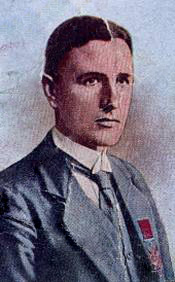
Two Turnbulls were Scottish recipients of the Victoria Cross, the highest and most prestigious award for gallantry in the face of the enemy that can be awarded to British and Commonwealth forces. The most famous being James Youll Turnbull, who single-handedly held a position for 24 hours, against almost a full regiment of Germans, with a machine gun in World War I. Each time the British tried to send reinforcements, they were wiped out due to the open ground exposing them to deadly crossfire. The ground was held by Turnbull singlehandedly, and this story became renowned for the British people in the dark days of the war. He died the next day while leading a Brigade of Highlanders on a grenade attack, which eventually turned the tide of the deadly stalemate where some 50,000 soldiers on both sides became casualties. Winston Churchill himself wrote on this defense in his book stating: On 1 July 1916 at Leipzig Salient, Authuille, France, Sergeant Turnbull's party captured a post of apparent importance to the enemy who immediately began heavy counter-attacks, which were continued throughout the day. Although his party was wiped out and replaced several times, Sergeant Turnbull never wavered in his determination to hold the post, the loss of which would have been very serious. Almost single-handed he maintained his position, displaying the highest degree of valour and skill in the performance of his duty. Later in the day, he was killed while engaged in a bombing counter-attack. The Germans were said, after seeing the body of Turnbull in his uniform kilt, to call him and all Scots "The Devils in Dress" and "Ladies from Hell!"
The Turnbulls held land throughout the Borders.[ citation needed ] They were the only clan to have a bounty placed on them by the King.[ citation needed ] William Turnbull received a charter from Robert the Bruce in 1315 to land near Philiphaugh, [14] and John Turnbull received the lands of Hundleshope from King David II of Scotland. [15]
John Turnbull, nicknamed "Outwith sword", for his fierce temper, is listed as a Scots prisoner of war in England around 1400. William Turnbull held a papal appointment in 1433 and this same name appears as one of the canons of Glasgow Cathedral in 1452. Stephen Tournebulle represented Scottish interests at the University of Orleans at the beginning of the sixteenth century. William Turnbull, Bishop of Glasgow, procured from the Pope a charter to establish a university in Glasgow in 1450. The Bishop's vision was realised when the University of Glasgow was founded in 1451.
Many Turnbull families moved into the Cheviot Hills and into the northern lands of Northumberland depending on the politics of the day and the King of the day. Those who became "English" also changed from their Presbyterian roots to being Church of England. For example, John Turnbull was born at Roddam in 1789 in the Anglican Parish of Ilderton, but was baptised in the nearby Presbyterian Church at Branton. There were many small Presbyterian Churches dotted around Northumberland as several Scottish families crossed the border to live. He, along with others, eventually attended Anglican churches. John Turnbull's latter children were baptised in Anglican churches. This John Turnbull went on to being the Land Agent for the Earl of Liverpool in the little Shropshire settlement of Pitchford from the 1820s to the 1850s.
Turnbull family were the last of the "First Family" during the Siege of Petersburg, and was the residence of Robert E. Lee for the last 13 weeks of the war. For their loyalty during the tough times, Lee's family bible was given to Mrs. Turnbull who had three sons, one killed and two wounded in Lee's army of Northern Virginia. 17 Turnbulls fought for the Confederacy during the Civil War with five dying in combat (two of which in Picket's charge where family lore claims it was a Turnbull who jumped over the wall first, Jacob Turnbull 1st Sergeant for the 2nd Va was reported to be the highest-ranking NCO to lead Regiment over the wall after all officers were either killed or wounded), seven dying of disease and five of combat wounds. Lee's Family bible was returned by Scott V. Turnbull to R.E. Lee's son at Lee's funeral in 1870 per the Richmond Papers.
William Turnbull was born in Scotland and was an archer in the Garde Ecossaise created by Charles VII of France. In 1474, William was naturalized French with a royal letter of naturalization. At this moment, William Turnbull became "Guillaume de Tournebulle" and the founder of a French noble family established in the province of Champagne, where his descendants were lords of Saint-Lumier-La-Pouilleuse and lords of Heiltz-le-Maurupt. The Tournebulle coat of arms was the same than the Turnbull of Bedrule family, in French "d'argent à trois têtes de boeufs de sable".
William Turnbull was a Scottish politician and bishop, credited with founding Jedburgh Grammar School and the University of Glasgow. He served as the Bishop of Glasgow, from 1448 to 1454 and was the first Chancellor of the University of Glasgow.
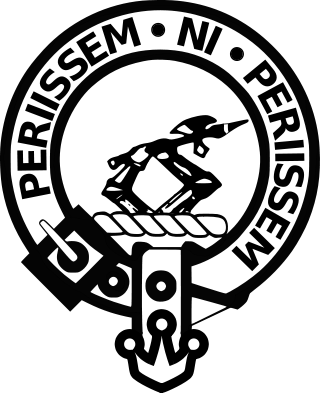
Clan Anstruther is a Scottish clan.

Clan Scott is a Scottish clan and is recognised as such by the Lord Lyon King of Arms. Historically the clan was based in the Scottish Borders.

Clan Graham has two main families of Scottish clans, the Grahams of Menteith and the Grahams of Montrose. Each have their own tartan patterns. William Graham became the 7th Earl of Menteith in 1610 in what is now Perthshire, Scotland. The Grahams of Montrose had territories in both the Scottish Highlands and Lowlands, and the chief of the clan rose to become the Marquess and later Duke of Montrose.

Clan Houston is a Scottish clan. The clan does not have a chief therefore it was considered an Armigerous clan.

Clan Bruce is a Lowlands Scottish clan. It was a royal house in the 14th century, producing two kings of Scotland, and a disputed High King of Ireland, Edward Bruce.

Clan Carmichael is a Scottish clan and is also considered a sept of the Clan Douglas, Clan MacDougall, Stewart of Appin, and Stewart of Galloway.
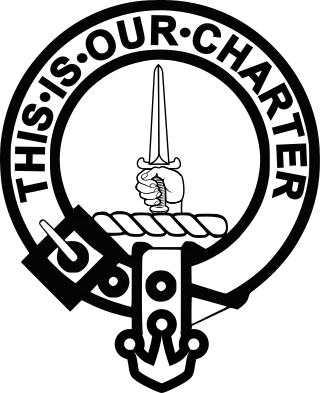
Clan Charteris is a Scottish clan of the Scottish Lowlands.

Clan Elphinstone is a Lowland Scottish clan.

Clan Sempill is a Scottish clan of the Scottish Lowlands.

Clan Haldane is a Lowland Scottish clan.

Clan Rollo is a Lowland Scottish clan seated at Pitcairns House, Perthshire. The Chief of the Clan is styled Lord Rollo.

Clan Spens or Spence is a Lowland Scottish clan and is also a sept of Clan MacDuff.
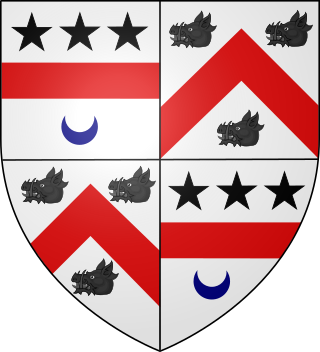
Clan Trotter is a Scottish clan of the Scottish Borders.

Clan Muir is a Scottish clan that is armigerous. Per certain sources, holders of the surname Muir, of Ayrshire, have been noted as a possible sept of Clan Boyd, though this is not clearly identified to a reliable resource. A spelling variation More/Moore is a sept of Clan Leslie in Aberdeenshire, and, having genetic proof of Muirs in Aberdeenshire, may have roots in the Mure/Muir line of southwest Scotland.
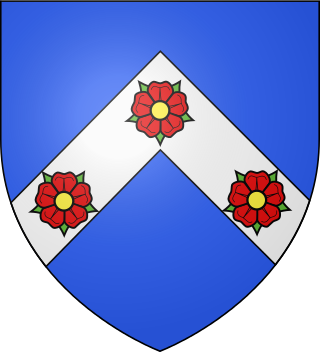
Clan Blackadder is a Scottish clan. The clan historically held lands near the Anglo-Scottish border.

Bedrule is a hamlet and civil parish in the historic county of Roxburghshire in the Scottish Borders area of Scotland. The hamlet lies on the east side of the Rule Water, which gave the village its name, about 4 miles west of Jedburgh. It lies south of the A698 between Hawick and Jedburgh. Other local place-names based on the river include Hallrule, Abbotrule, Ruletownhead and Spittal-on-Rule. Larger settlements include Bonchester Bridge and Denholm, as well as Hawick and Jedburgh.

Clan Cumming, historically known as Clan Comyn, is a Scottish clan from the central Highlands that played a major role in the history of 13th-century Scotland and in the Wars of Scottish Independence. The Clan Comyn was once the most powerful family in 13th-century Scotland, until they were defeated in civil war by their rival to the Scottish throne, Robert the Bruce.
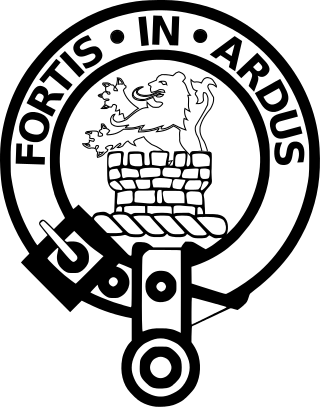
Clan Middleton is a Lowland Scottish clan. It is recognised as such by the Court of the Lord Lyon, but as it does not currently have a chief recognised by the Lord Lyon King of Arms it is considered an armigerous clan.
Bedrule Castle is a ruined 13th-century castle in the Rule Valley, in the Scottish Borders area of Scotland.